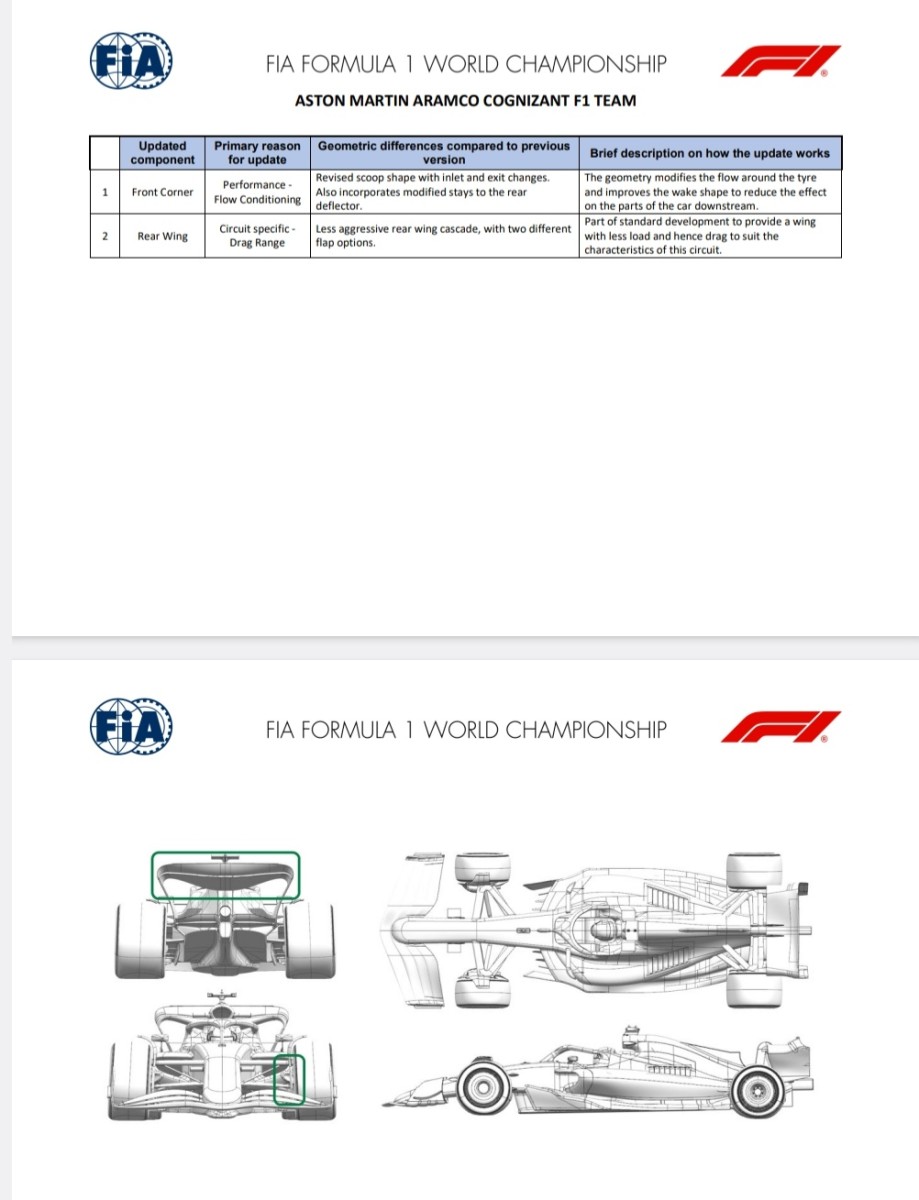F1 News: Car Upgrades Revealed For Saudi Arabian Grand Prix - Nothing For Alpine

Red Bull, Mercedes, Ferrari, McLaren, Visa Cash App RB, Williams, and Aston Martin have all announced technical upgrades to their cars for the high-speed demands of the Jeddah circuit, focusing on improving aerodynamic efficiency and cooling performance.
These adjustments include modifications to rear wings, engine covers, beam wings, and other components to balance drag reduction with sufficient downforce and cooling efficiency for optimal performance.
It's worth noting that, despite a surprising lack of performance last weekend, Alpine has not brought any upgrades to Jeddah. Neither have Haas or Sauber.
- Aerodynamic Efficiency: Teams have adjusted rear wings, beam wings, and other aerodynamic surfaces to reduce drag and maintain downforce, crucial for Jeddah's high-speed straights and fast corners.
- Cooling Efficiency: Modifications to engine covers, cooling louvres, and brake duct exits aim to optimize thermal management in the hot Saudi Arabian climate, ensuring power units and brakes operate within ideal temperature ranges.
- Circuit-Specific Adaptations: Each team has tailored their car updates to meet the unique demands of the Jeddah circuit, balancing the need for straight-line speed with the agility to navigate fast corners efficiently.

Red Bull
Coke/Engine Cover
- The team has optimised the cooling range by refining the engine cover. The bodywork panel forming a suspension aperture and cooling exit has been reduced in size, which is particularly suited to Jeddah's average speed and absence of slow-speed corners. This allows the power unit to operate within its limits while ensuring effective cooling.
Rear Wing
- In response to the circuit's drag range requirements, the rear wing assembly has been given a lower camber. This design change results in less aerodynamic load and drag at high speeds, making it more efficient for the Jeddah circuit than the design used in Bahrain. This tweak is intended to balance the power unit's output against the drag, particularly at higher speeds.
Beam Wing
- Focused on the same goal of lowering drag levels for the high-speed Jeddah track, the beam wing has been adjusted with a reduced camber. This alteration serves to maintain optimal balance and aerodynamic efficiency at various speeds.
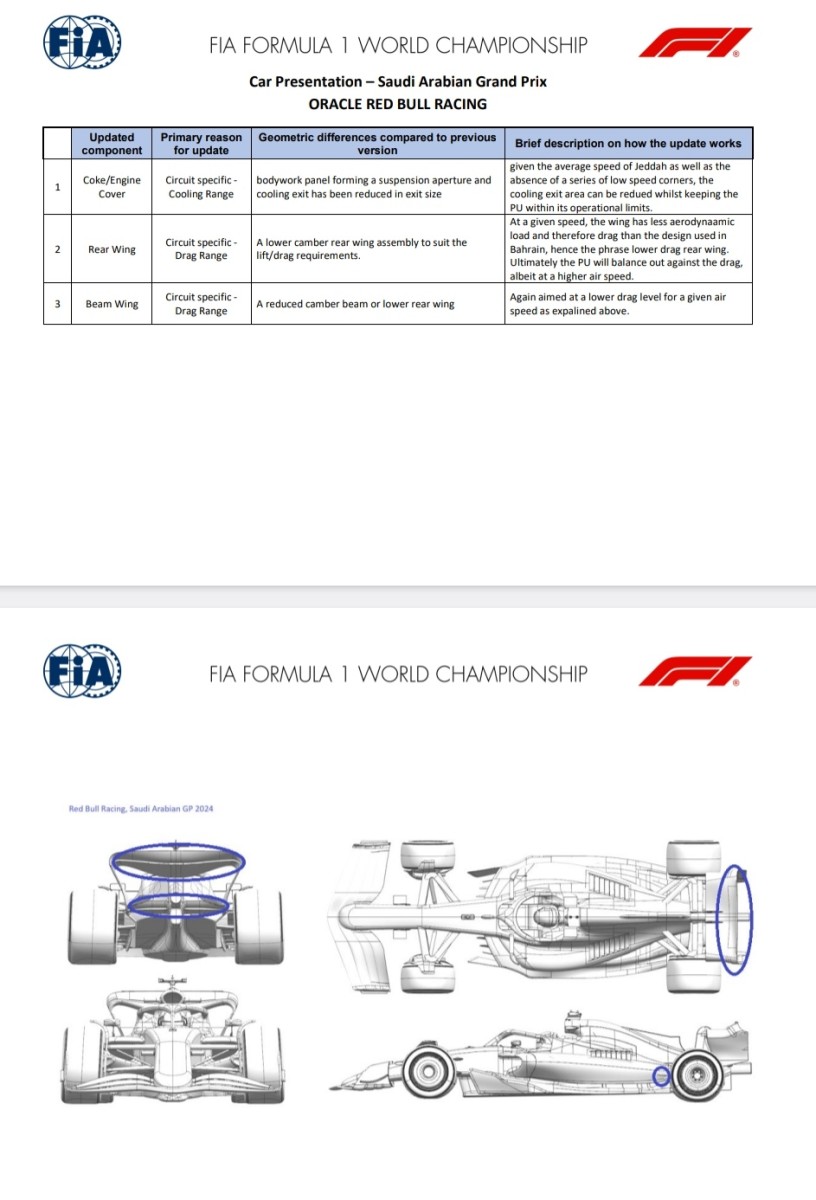
Mercedes
Mercedes-AMG Petronas F1 Team has unveiled their technical adjustments to the W15 to adapt to the high-speed track.
Rear Corner
- Mercedes has focused on improving the local load performance by modifying the rear corner of the W15. The geometric change involves lowering the deflector rotation. This refinement reduces the loading on the forward element, enhancing the robustness of the lower deflector across various ride heights. This subtle yet effective tweak is expected to deliver improved stability and handling throughout the ride height range, a critical factor on the flowing and fast-paced Jeddah track.
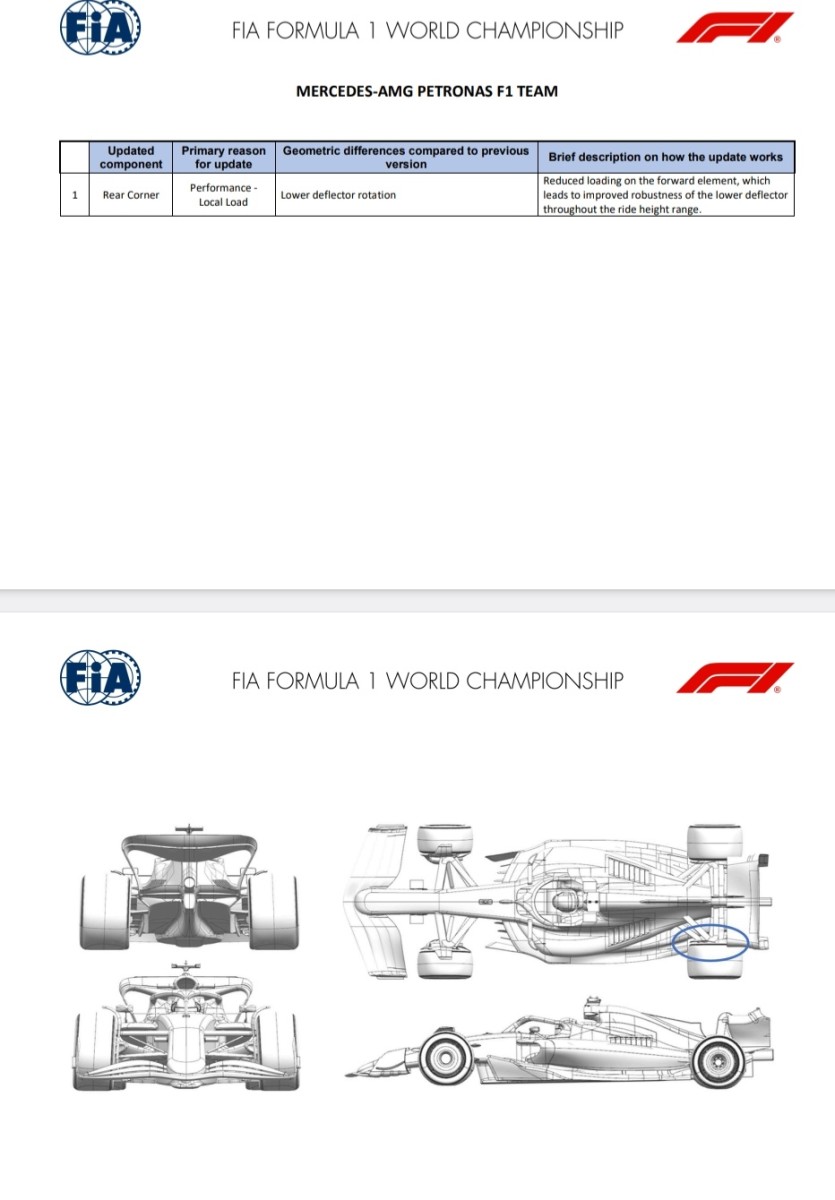
Ferrari
Here's what has been enhanced on the SF24:
Rear Wing
- Ferrari has adapted the rear wing from the 2023 car, specifically tuned for the Jeddah circuit's low downforce requirements. The team has introduced a lower downforce top rear wing design to suit the track's high-speed straights and fast corners. This update is aimed at achieving a balance between drag reduction and maintaining enough downforce to navigate Jeddah's unique layout efficiently.
Beam Wing
- Alongside the rear wing, the beam wing has undergone modifications to de-power the lower beam. Ferrari has prepared two variations to ensure they can select the optimal setup depending on the final aerodynamic efficiency requirements dictated by the Jeddah track's characteristics. This includes an arrangement that features a single element, all aimed at maximising performance around the peculiarities of the circuit's layout.
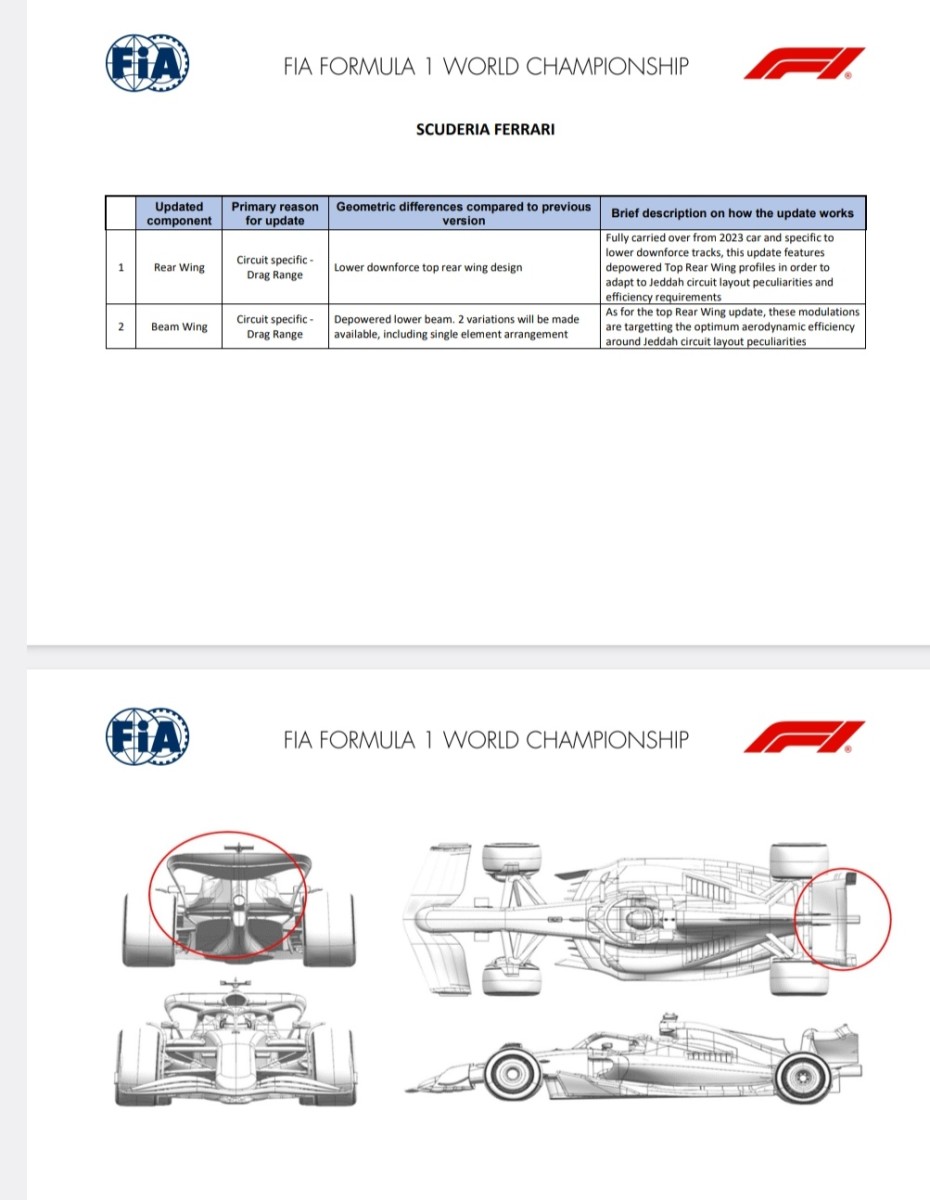
McLaren
Once again, McLaren is focusing on the reduction of drag in preparation for the high-speed demands of the Saudi Arabian Grand Prix.
Rear Wing
- A new rear wing assembly has been crafted to provide lower drag, featuring an offloaded Main plane and Flap design. This modification is set to yield a more efficient reduction of both downforce and drag, a crucial adjustment for the high-speed straights at Jeddah. The team's engineers have balanced the need for straight-line speed with maintaining sufficient downforce for the circuit's corners.
Beam Wing
- The beam wing has been reconfigured with a new geometry, including a new upper and lower Beam wing Element. This design change works in tandem with the updated rear wing assembly to further enhance the aerodynamic efficiency of the car. The result is a coherent update that harmonizes the reduction of downforce and drag, aligning with the circuit-specific demands.
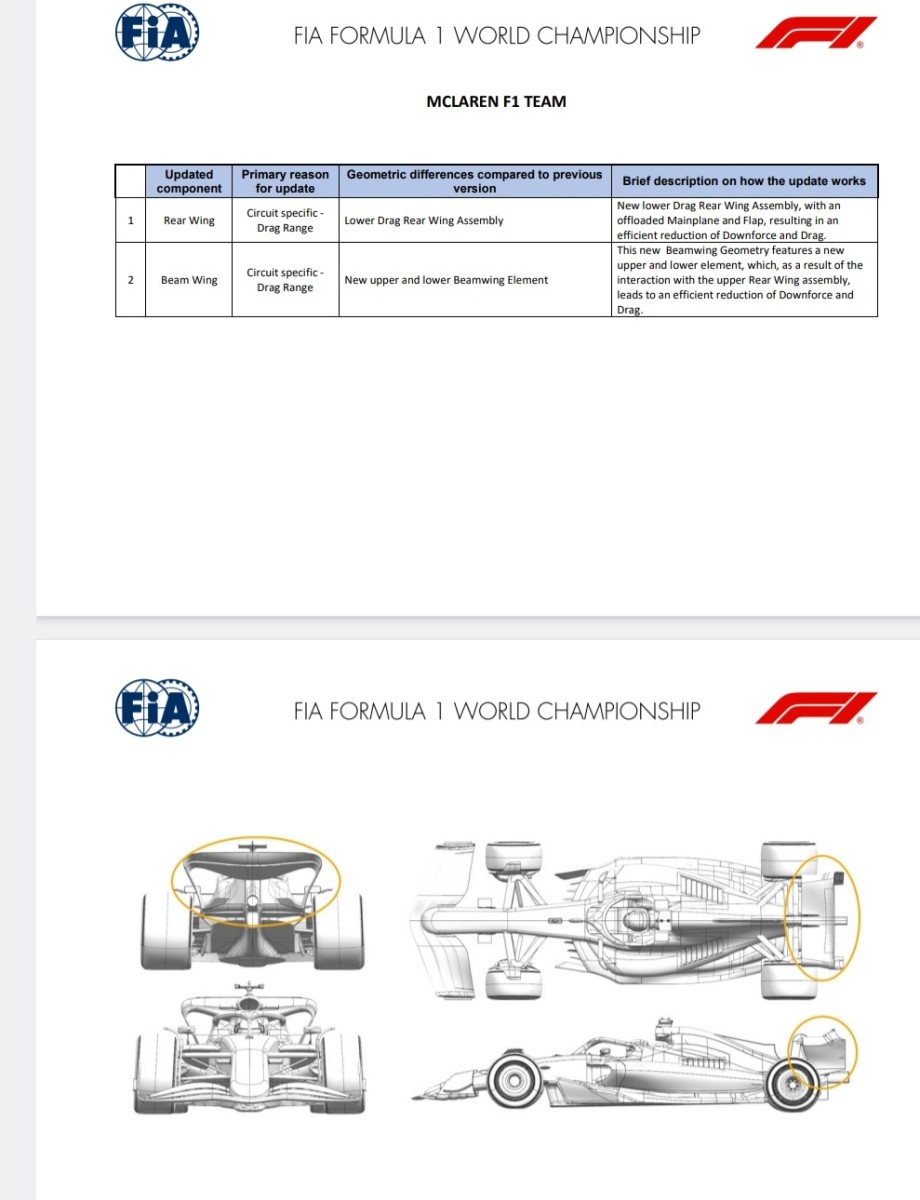
Visa Cash App RB
Visa Cash App RB F1 Team has rolled out a set of component upgrades to their vehicle, focusing on performance flow conditioning and cooling efficiency for the high demands of the Saudi Arabian Grand Prix.
Coke/Engine Cover
- The team has re-engineered the coke/engine cover from the original Race 01 design, altering the shape and slope of the top deck. This improves the flow quality passing over the bodywork, which is crucial for the aerodynamic performance at the high-speed sections of the Jeddah circuit.
Cooling Louvres
- Cooling efficiency is crucial in the hot Saudi Arabian climate, and the team has responded by adding cooling louvres on the top deck of the bodywork to enhance the cooling range. This optional feature increases airflow through the radiators, ensuring the car's power unit operates within optimal temperature ranges.
Front Wing
- To adjust the balance range for lower rear wing levels, the front wing flap chord trim has been modified. This optional update allows the team to reduce the front wing load by decreasing the loaded area of the flap, which can be crucial for fine-tuning the car's balance to the circuit's specific conditions.
Rear Wing
- Additionally, the rear wing has been adapted to further optimise the drag range. By reducing the camber and incidence, the rear wing's load and drag are minimised. This optional adjustment helps to achieve a better balance between downforce and drag, aligning with the high-speed demands of the Jeddah track.
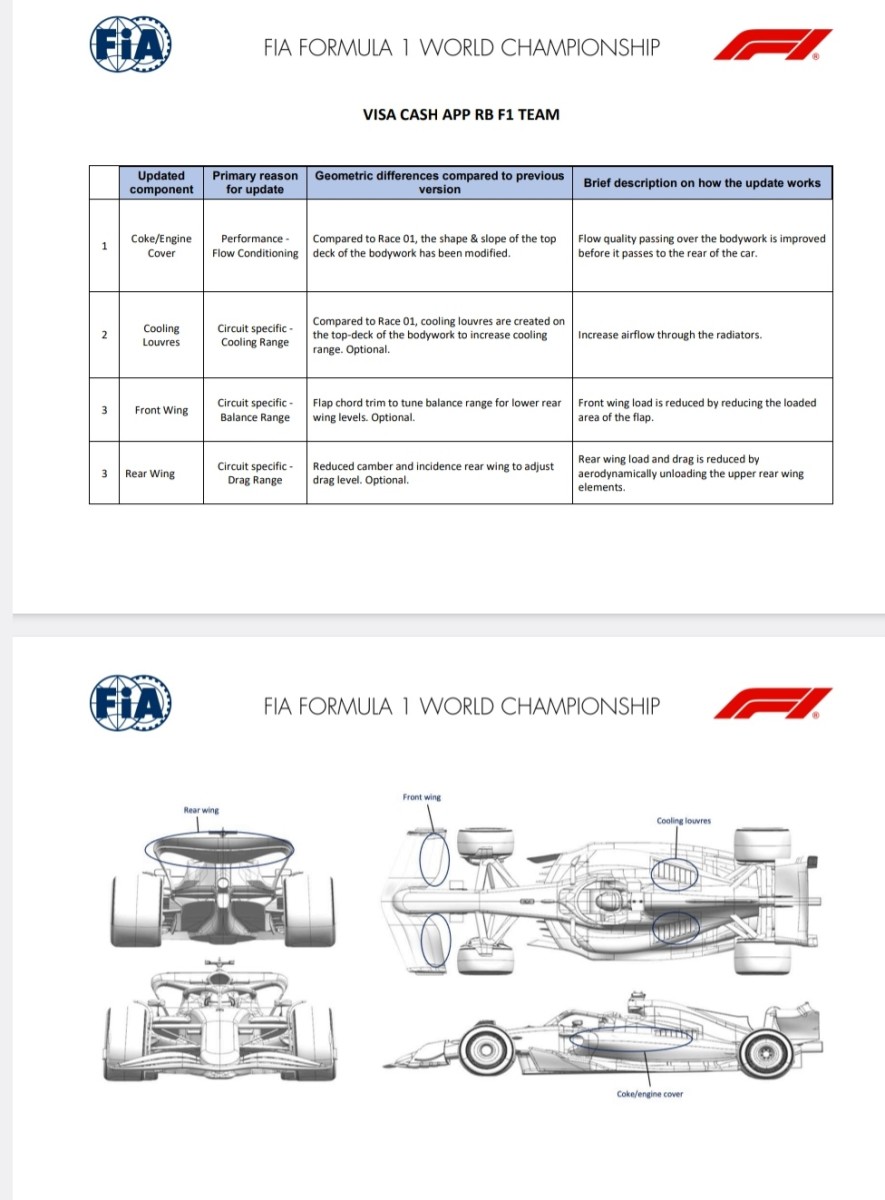
Williams
Williams Racing heads into the Saudi Arabian Grand Prix with tailored modifications to the FW46, focusing on optimising the car's drag range and cooling efficiency.
Beam Wing
- In an effort to refine the drag profile, Williams has implemented a trim to the trailing edge of the beam wing to reduce the chord length. This alteration aims to decrease both the downforce and drag of the rear wing assembly, delivering a level of performance that is optimised for the high-speed requirements of the Jeddah circuit.
Front Corner
- A smaller exit for the front brake duct is another specific change introduced by Williams. This design modification not only reduces the exit area compared to the version used in Bahrain but also adjusts the cooling flow rate through the front brake system. The result is a more controlled brake temperature, ensuring the brakes operate within an ideal range that matches the thermal demands of the Jeddah track.
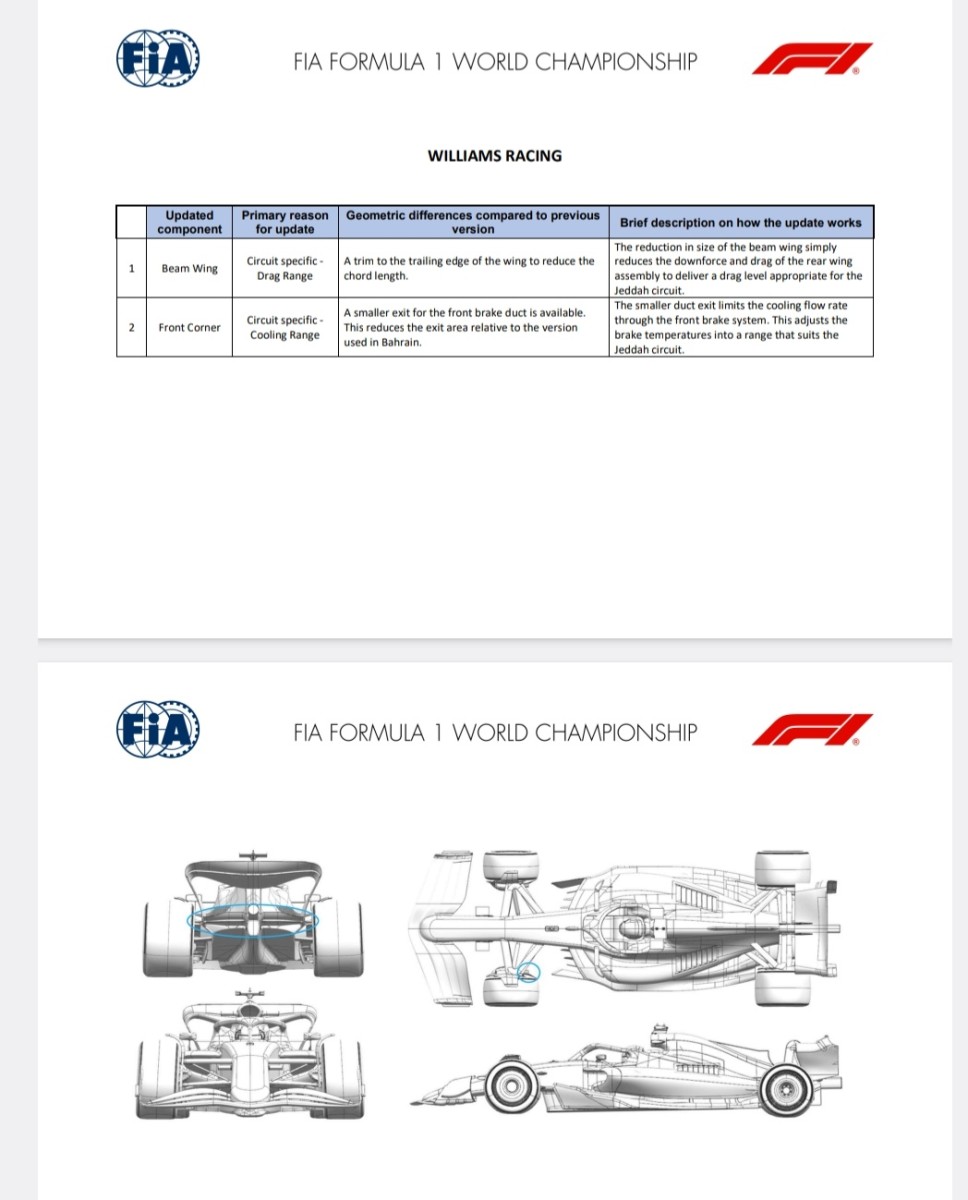
Aston Martin
Aston Martin Aramco Cognizant F1 Team comes in with a focus on optimising performance flow conditioning and drag range in preparation for the high-speed Jeddah circuit.
Front Corner
- Aston Martin has introduced a revised scoop shape in the front corner of the car, coupled with modified inlet and exit changes. The revised geometry is designed to alter the flow around the tire and improve the wake shape, thereby reducing the aerodynamic impact on downstream parts of the car. This update is targeted at enhancing the performance by managing the air flow more effectively around the tires and the front of the car.
Rear Wing
- A re-designed rear wing assembly with less aggressive cascading elements has been rolled out, featuring two different flap options. This is part of a broader development strategy aiming to provide a wing that operates with less load, reducing drag without compromising the downforce required for the unique demands of the Saudi Arabian Grand Prix circuit.
